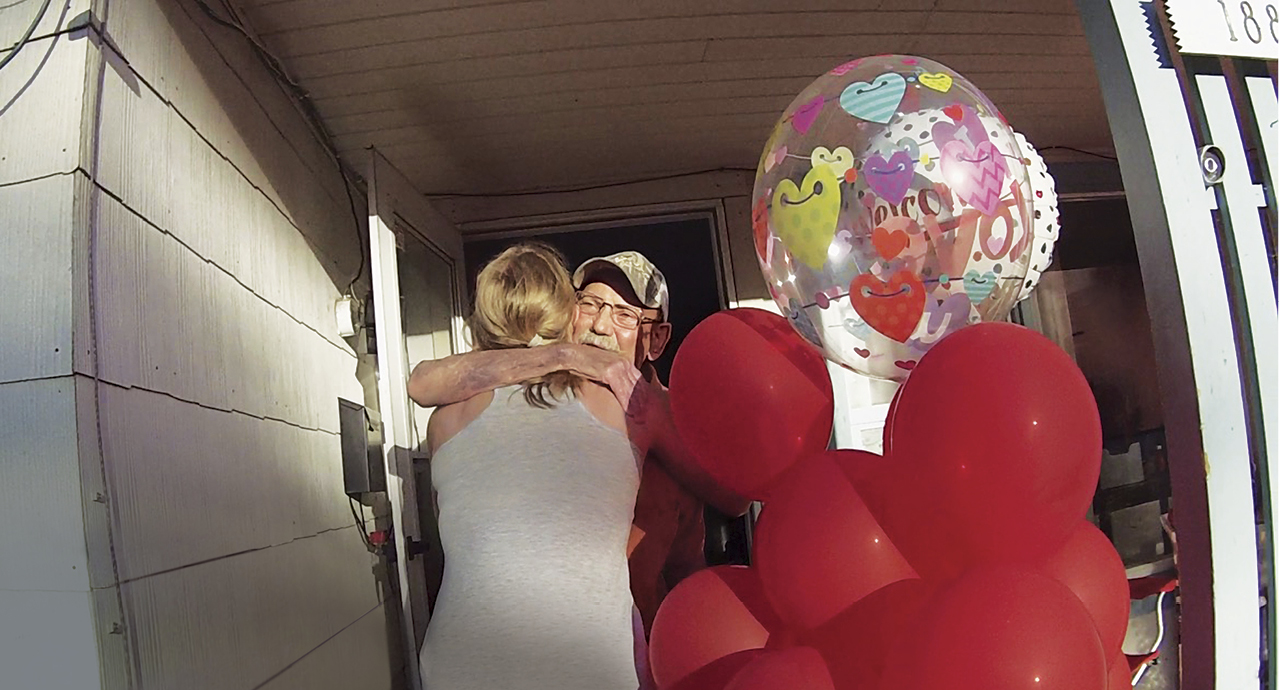Long-distance donor
meets her match
When Diana von der Heyde learned that a former classmate needed a bone marrow transplant, the 25-year-old joined a bone marrow registry, never thinking she would one day save the life of a man more than 5,500 miles away — or that they would meet during an emotional reunion five years later.
Rick Little of Merced, Calif., was diagnosed with acute myeloid leukemia in 2011. Doctors referred him to UC Davis, where he learned he would need a stem cell transplant. Unaware of the donor’s identity, he was nevertheless grateful for the stranger’s selfless act.
After treatment to destroy cancer cells in his body and suppress his immune system, he received his transplant under the care of oncologists Carol Richman, Joseph Tuscano and Mehrdad Abedi. After a month in the hospital, the donor’s cells replaced the blood-forming system in his bone marrow, changing his red blood cell type from his original A-positive to his donor’s O-positive.
Although Little hoped he and his donor might one day connect, their meeting almost never happened. Five months after the transplant, his blood counts had dropped and he had just 50 percent of his donor’s cells. Within a month, he had none — and relapsed. Doctors first gave him an additional course of anti-leukemia therapy, which removed the abnormal cells. Then he received a donor leukocyte infusion using separately collected T cells from von der Heyde to stimulate the graft-versus-leukemia effect.
Little developed a common side effect called graft-versus-host disease, or GVHD. The disease occurs when the donor’s immune cells mistakenly attack the recipient’s normal cells. The problem can occur even when the patient is taking drugs to suppress the immune system, as Little was and continues to take today to combat GVHD. Despite the complications, the transplant and immunosuppressive therapy worked.
Curious about his donor, Little supplied his contact information to the National Marrow Donation Program. In February 2014 von der Heyde responded in an email from her home in Holzwickede, Germany.
Little’s spirit lifted. Their friendship was instant. They shared details about their families, exchanged photos. After months of emailing, they initiated weekly Skype chats on Sunday evenings.
“It lights me up,” Little said of his calls with von der Heyde. “I can’t get the smile off my face.”
In October — five years after Little’s transplant — von der Heyde flew to California with her boyfriend, Tim Mester, to meet Little, Little’s adult children and grandchildren and his medical team at the Cancer center and hospital.
“It was unreal, like meeting a family member,” said von der Heyde, still surprised to have had such a lasting impact on someone and with so little effort. “It’s no big deal because it’s just like donating blood. It can have such a big effect.”
Little guided his visitors through the hospital and Cancer Center, sharing stories of his treatments and reminiscing with staff. The recipient introduced his donor to his nurses and bone marrow transplant team, who held back tears as they embraced them both.
“I truly love this woman,” he said after the reunion.
The two have agreed to meet again in five years — when Little is 75 and von der Heyde, 35. The age gap, language barrier and thousands of miles are only minor hurdles for these friends, who share much more now than an O-positive blood type.


